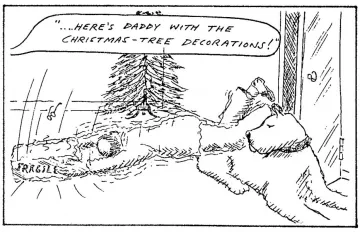Historical Lens: Peter Alden Franken (1928-1999)

Did you know that the second director of the Optical Sciences Center (OSC), Peter A. Franken, was not only a pioneer in the field of nonlinear optics, but also a talented glass artist?
As the director of OSC from 1973 to 1983, Peter Franken’s talent for bringing out the best in people, along with his quick sense of humor, are well known. His research interests were many and varied, and his treasure trove of yarns, stories and jokes are legend. Peter was also an accomplished painter, sculptor, jewelry maker and a gourmet cook.
After “promoting himself back to professor” in 1983, Peter began to develop his interest in glass as an artistic medium—cleverly self-depicted as “Franken-stein glass.” His designs in stained-glass were exhibited in local Tucson art galleries, and many of his mixed-media assemblages now adorn the hallways and stairwell of the east wing of the Meinel building.
Introduction to Glassblowing
University laboratories often contain unique equipment used in determining measurement, calibration, and analysis of variations and precision. The focus of the lab’s research determines the required apparatus, and for some experimentalists there is a need for specialized glass instruments.
Today, custom scientific glassware can easily be ordered from many different companies. But in the late 1950s and early 1960s—as a young professor and atomic physicist at the University of Michigan—if all that stood between Peter and his discovery was a glass instrument—he would turn to the University’s in-house scientific glassblower, Karl Schumann. Karl—a temperamental artist who spoke a colorful, heavily-accented English—designed and produced any lab glass that could not be ordered from a catalog; repaired broken items; and re-introduced Peter to the functional and decorative medium of blown glass (he had first learned to blow glass as a graduate student at Colombia University).

Peter’s love of glassblowing continued after coming to Arizona in 1973. A cartoon in the January 6, 1978 issue of OSCillations depicts Peter tripping over his family’s Great Dane, Ben, as he attempts to carry Xmas ornaments into the house. Peter had spent the three days before Christmas in Professor Clarence L. Babcock’s glass laboratory—OSC Annex, south of campus—blowing and silvering glass tree ornaments for his daughter Jessica, who had been recently married and didn’t yet have any decorations of her own. When asked how he managed to find time during the craziness of the holiday season to craft hand-blown glass ornaments, Peter quickly replied, “glassblowing is good therapy for shattered nerves.”
Stained-Glass Art
Later, Peter discovered what was to become his favorite artistic medium, stained-glass. Stained-glass is both an art and a craft, requiring artistic skills to conceive a workable design, and the engineering skills to assemble it—perfect for someone who was not only a scientist, but once taught an art course at Stanford University. Between 1983 and 1999, Peter produced many stained-glass works of art, across a broad spectrum of color and form.
After Peter’s death in 1999, Peg Franken donated several of her husband’s mixed-media pieces to OSC. Six of these can be found displayed in the east wing of the Meinel building—affectionally referred to as “The Peter A. Franken Gallery of Broken Art” by his friends and colleagues.
- Volcano, glass shadowbox with cut glass set at an angle, 5th floor hallway.
- Desert Waterfall, stained-glass depiction inside a mirrored frame, 5th floor hallway.
- Chernobyl, 1986 photo of Chernobyl framed in a stained-glass frame, 5th floor hallway.
- Reflection, square glass tiles inlayed in a glass frame, 5th floor hallway.
- Journey’s End, painting of an asteroid in a shredded paper frame, stairwell 4th/5th floor.
- Earthrise, abstract stained-glass display, stairwell 5th/6th floor.
Others in the collection include,
- Blue Fan, wooden pieces forming a fan spray.
- Yuri Gagarin, a photo of Yuri Gagarin statue, Moscow, in a red stained-glass frame.
- Birds, glass shadowbox with cut glass set at an angle.
- Desert Moon, stained-glass depiction with surrounding stained-glass frame.
- Iris & Tulips, stained-glass depiction.
